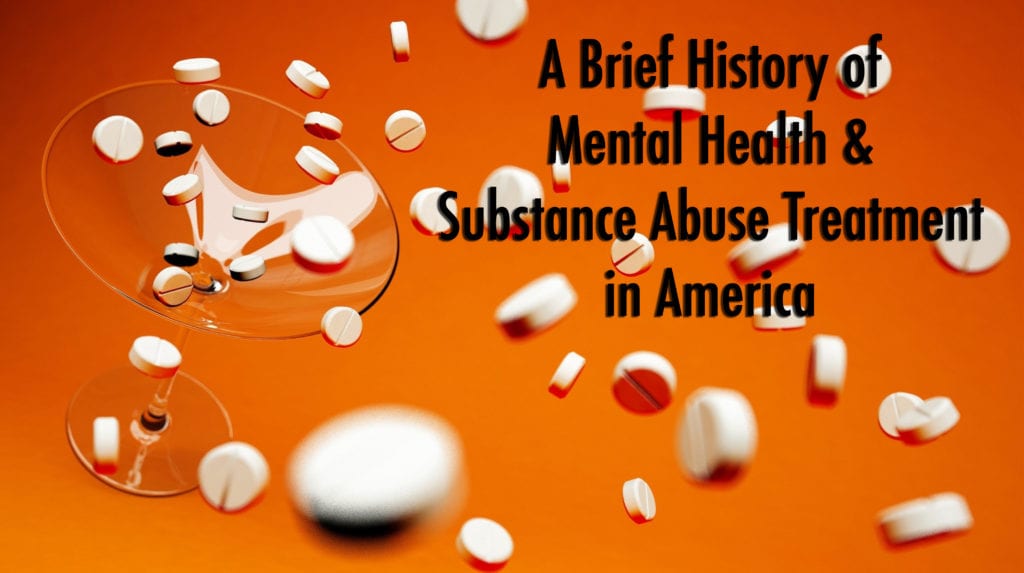Throughout history, the use of illicit substances is documented as far back as the earliest of recorded human civilization. 5,000 year-old Egyptian hieroglyphs show us that people who suffered from alcohol addiction were cared for in the homes of other people. Both the ancient Greek and Roman empires carry records of not only people suffering from alcoholism, but also for those people receiving treatment in “public, or private asylums.”(1) The ancient Chinese civilizations also had problems with their citizens abusing opium, which was first imported from Great Britain. Opium abuse also gave westerners a sense of moral obligation to colonize the greater part of Asia and help them wean off of their addiction to opium. As such, the British government began compelling the Chinese to cut poppy production after the second Opium War.
In America the first instances of any substance abuse treatment were in the Native Americans’ ‘sobriety circles’. The European settlers of the 1600’s had brought alcoholic beverages to the Americas and soon they began trading alcohol to native tribes, sometimes for nefarious reasons. It is known that the European settlers would give chiefs gifts of alcohol before they negotiated settlement and trade deals, to loosen them up. It has been argued that the European settlers of the 1600 and beyond would often give alcohol to native populations to decimate them and make them conquered more easily. Members of many tribes attributed the alcoholic liquids to ‘bad spirits’. They would gather those affected in a circle formation to give them a sense of tribe and to try to repel those bad spirits. The 12-step program model is loosely based on the natives’ sobriety circles.
In colonial America, Benjamin Rush, the father of modern psychiatry was the first to attribute addiction as a type of mental illness and therefore one that could be treated. This was the first time addiction was seen as anything different than the stigma of a moral failing. In Rush’s mind, alcoholism was a chronic disease that could be treated with various techniques. Those techniques became very hot properties, as every form of experimenter and entrepreneur wanted to try to profit off of the treatment of this disease. This led to some practices that we now know today to be very harmful such as electro shock therapy and injecting the body with various substances like gold, silver, mercury and arsenic. This injection therapy was the brain-child of Dr. Leslie Keely and while that method was unorthodox, and just plain wrong, one of his ideas, a 31-day stay at a treatment facility is the foundational drug and alcohol abuse treatment models primarily used today.

These substance abuse treatment centers were a huge step in understanding addiction and the ability to treat it as a disease.
Along came the era of prohibition and the temperance movement thought they had a major victory in reducing alcoholism in the United States. Prohibition however, was a colossal failure. Alcohol use continued to rise and after thirteen years, the 21st amendment was ratified to help fight organized crime and allow citizens to continue to consume alcohol legally. After just 2 short years, Bill Wilson and Dr. Bob Smith founded Alcoholics Anonymous. In the formation, they channeled the concept of the sobriety circles from the Native Americans and also were the first to use the 12 steps in recovery. These steps were a pathway of different techniques, geared towards living a life free from alcohol or drugs. AA remains today as the most commonly used resource for someone looking to steer away from substance abuse.
Many people have found the help they need in AA or their offshoot, Narcotics Anonymous (NA). Still, others criticized the use of the ‘higher power’ and surrendering to being powerless against their addictions. As this was the classic AA model, today there are alternative versions of the program for agnostics and secular considerations of the twelve-step program.
The Minnesota model really cemented the version of the substance abuse treatment facility that we know and understand today. In 1948, this model incorporated the principles of the 12-step program, but added family involvement within a 28-day inpatient stay. AA was attended both during and after the inpatient stay. They also believed that addicts could help each other through their recovery so the hospital was staffed with both medical professionals and trained resource personnel that were usually recovering addicts themselves. This treatment model was instrumental in suggesting that alcoholics and other addicts were not morally inept and instead had a physical disease that was treatable. The stigma of substance abuse continues to this day, but more and more are becoming increasingly understanding of the concept of addiction as a disease, instead of a moral failing.

During the early years of substance abuse treatment, many experimental methods were adopted and tested.
One example was the United States Narcotics Farm in Lexington, Kentucky. This farm legitimately had good intentions in helping addicts recover from their disease. They were among the first to use methadone to help heroin addicts, a practice that continues with success to this day. The Central Intelligence Agency however found an unnoticed resource with the farm, using it to conduct early experiments with LSD on their patients. The Federal Government decided to turn its work with substance abuse to the states in 1975.
Substance abuse and mental health treatment has come a long way since then, and science is still progressing to more effectively treat those in need.
Medications have been developed to help fight substance abuse and are showing great promise. Medically assisted treatment (MAT) programs are being used today to fight the current opioid epidemic. These medications help the patient control and manage their withdrawal symptoms, which is a reason many don’t want to quit their addictions. A recent move towards an evidence-based approach to recovery has advanced rehabilitation facilities in a positive way. This approach uses scientific verification to prove the success of their treatment or rehabilitation programs. However, there are still a lot of recovery centers that try to take advantage of addicts, as they are seen as a vulnerable and marginalized group.
Progress in psychology and psychotherapy have shown addiction specialists a deep connection between mental health and substance abuse. Today virtually all alcohol and drug abuse treatment programs use a combination of social, psychological and medical treatments.
As we continue to learn from our history, there is continual pressure for the substance abuse treatment industry to innovate and evolve with the trends and new discoveries science has offered. This pressure is guiding the treatment industry in the right direction, but there are still many who need help. If you or your family member or loved ones are seeking treatment, give us a call right away. We are open 24/7 and we can help you get the help you need.
(877) 228-4679
(1) White WL (1998) Slaying the Dragon. Chestnut Health Systems, Bloomington
